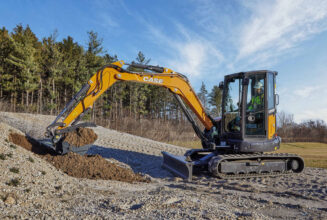Phenology: A Timely Topic
By Brandon M. Gallagher Watson
Olde timey gardeners are full of all sorts of useful advice. Plant tomatoes when lily-of-the-valley blooms. Plant peppers when the iris bloom. Plant corn when oak leaves are the size of a squirrel’s ear. People have been observing and recording these coinciding events going back thousands of years. The Chinese have the earliest written records of these arrival dates, dating to around 974 B.C., and the timing of peak cherry blossom bloom have been recorded every year for the past twelve centuries in Japan. Who knew your grandpa was passing along ancient knowledge when he vociferated you with “corn should be knee-high by the Fourth of July”?
Today, powered by the Internet and smartphones, these provincial observations have evolved into a global network of data with tens of thousands of professional and amateur contributors. What were once just farmer’s colloquiums are now under the umbrella of phenology. Literally meaning “the science of appearance,” phenology studies the timing of life cycles in all living things. The date of bud break, sighting of the first spring flowers, insect emergence, bird migrations, and first leaf turning red in the fall are all observations recorded by phenologists.
What are we learning from this information at the global scale and, more importantly to us, how do we use it to improve how we do tree care?
The measurement of phenology
Your grandpa may know to plant peppers when iris bloom, but when exactly is that? Plants don’t have calendars to know when spring has sprung, and, regardless what the calendar says, the first day of spring happens significantly earlier in Atlanta than it does in Minneapolis. Although one aspect of phenology is observing the coinciding events such as what flowers are blooming when this butterfly appears, another aspect of it tries to predict the date on which this will occur.
Not only is it difficult to predict an occurrence date across latitudes, it is difficult to predict year to year. Where I live in Minnesota, the spring of 2012 started in mid-March, but in 2013 there was nearly a foot of snow on the ground at the beginning of May. Humans may mark the vernal equinox as the first day of spring each year, but nature’s rhythms are less reliable. To try and get a more predictable date, several different phenological indexes track temperature changes and other phenomena, and these can be used to key in when certain events may take place.
On the global scale, remote sensing using satellites can give us indications of changes in vegetation at the ecosystem level. The commonly used indicator Normalized Difference Vegetation Index (NDVI) measures the amount of near-infrared (NIR) light reflected by plants. As the cellular structure of leaves naturally bounces NIR light back into space, measuring this can give a pretty good indication of the vegetative growth phase the plants are in. Bud break, vigor/growth, length of the growing period, and the start of fall senescence can all be seen from space at the global scale. Over the course of several years, the NDVI can track these seasonal parameters to illustrate all sorts of climatic changes. Combining this data with historical records, we can see that the spring emergence date for many plant species has been occurring sooner in the year than they were before 1960. The first oak leaves to appear in the spring have advanced eight days earlier than they were 250 years ago, corresponding to the rise in global temperature near the end of the Twentieth Century. Although the NDVI is a great tool for tracking global changes, it is primarily a tool for recording what has already happened, not predicting when events will occur. For that, we turn to a different index.
As touched upon earlier, the leaves of oaks are emerging earlier due to a rise in annual temperature. The correlation between ambient temperature and emergence dates can be predicted by tracking the amount of accumulated heat using growing degree days (GDD). The concept is fairly simple and intuitive. Take, for example, a tree that would typically flower in the first week of June during a “normal” year. If we have consistently cool temps in April and May, that flowering time is likely to be later. If we have an abnormally early and warm spring, it can flower sooner. If we have cool temps in April and the first half of May, followed by unseasonably warm temps the last two weeks of May, our tree may flower right on time. It is not the temperature on one particular day that matters, but the accumulation of temperatures over a period of time that makes the difference. That’s what is being tracked by the GGD model.
How it is calculated is fairly simple as well. First, you start with a base temperature. In most cases, the base temp (or TBase for our equation) is 50 degrees Fahrenheit, because not much plant growth occurs when temps are in the forties, thirties, or colder. Then, on every day you take the high temp (TMax) add the low temp (TMin), and divide by 2 to get an average. Now, subtract our base temp and you have that day’s growing degree. The equation looks like this:
TMax + TMin – TBase = GDD
_______________
2
Say today’s high is 75 and the low is 55. Add them together for 130, divide that by 2, for 65, then subtract 50, and we have a growing degree day of 15. If the weather stayed like this for 5 days in a row, we have accumulated 75 GDD. If it stayed like that for 30 straight days, we would have 450 GDD. The GDD number accumulates for the entire growing season, until the temps stay consistently below the base temp, and then reset at the start of the new year. There are several good resources online for checking what events occur at a certain number of growing degree days. Lilacs bloom between 80 and 110 GDD, spruce spider mites hatch at 162 GDD, and the northern catalpas first bloom at 675 GDD. Whether you are in southern Illinois, or northern Michigan, you can track growing degree days to predict the occurrence of almost any natural event. So what do we do with this info?
Using phenology
There are several different ways to put phenology to work for you. First, as there are many events that occur at roughly the same number of growing degree days, you can use the occurrence of one, more conspicuous event, to predict the occurrence of something less obvious. For example, the emergence of emerald ash borer (EAB) adults goes unnoticed by pretty much everyone. They are small, they fly, and they leave the tree they exited from shortly after they come out. So how can we easily know when new EAB infestations may be possible? If we look at their GDD info for their emergence dates, we find they come out at about 550 GDD. Checking a list of other GDD events, we see the black locust ([ital>Robinia pseudoacacia<ITAL]) new FONT infest.
The other way green industry professionals are utilizing phenology is as a tool to assist with marketing their plant health care services. If there is a science of predicting the appearance of certain events, we can use that info to coincide our messages to customers precisely at the moment they are seeing the problem. For example, we know that customers call tree care companies when Japanese beetles start destroying their landscapes. We also know that Japanese beetles begin to emerge and attack plant at 970 GDD. If we are paying attention to the GDD accumulation throughout the season, we can send our “We Treat Japanese Beetles!” mailers to our customers timed just as the first adult beetles are beginning to munch their roses.
Phenology is an ancient practice that can help us do better tree care today. While there are advanced tools like satellites and NIR sensors involved, much of the science is centered on simply paying attention to the world around us. Begin by making your own observations of natural events in your area to start seeing what happens when. Later, you can make your own whimsical sayings to pass along to your grandchildren.
Brandon M. Gallagher Watson is director of communications at Rainbow Treecare Scientific Advancements, and is an ISA Certified Arborist (#MN-4086A).
Resources
Online
Urban Tree Phenology Project: http://www.budburst.org
OSU’s Phenology Calendar
National Phenology Network: https://www.usanpn.org/
Apps
Growing Degree Days (free app that gives you your current GDD number)
PhenoMap (free app that always you to record your own phenological observations)


